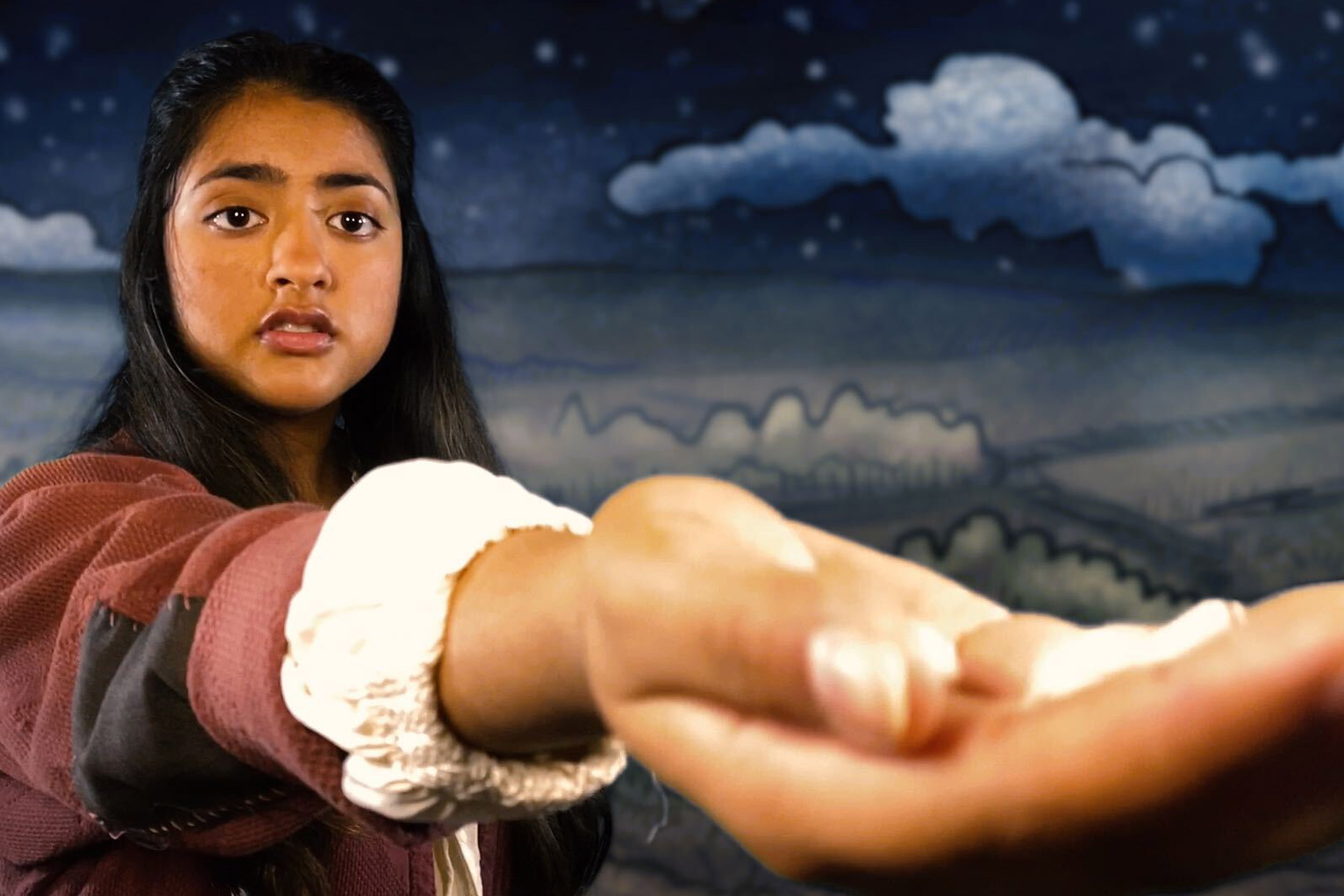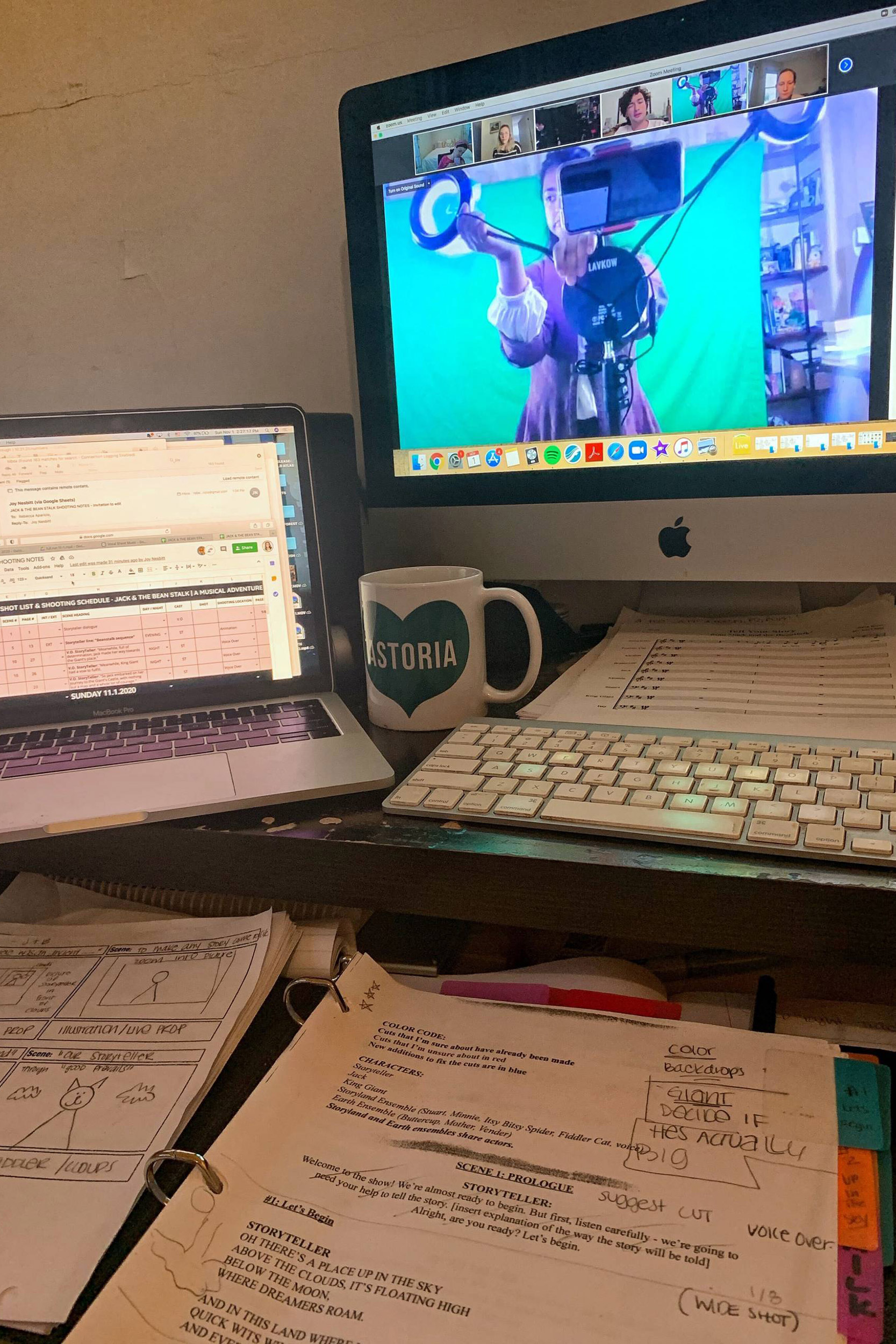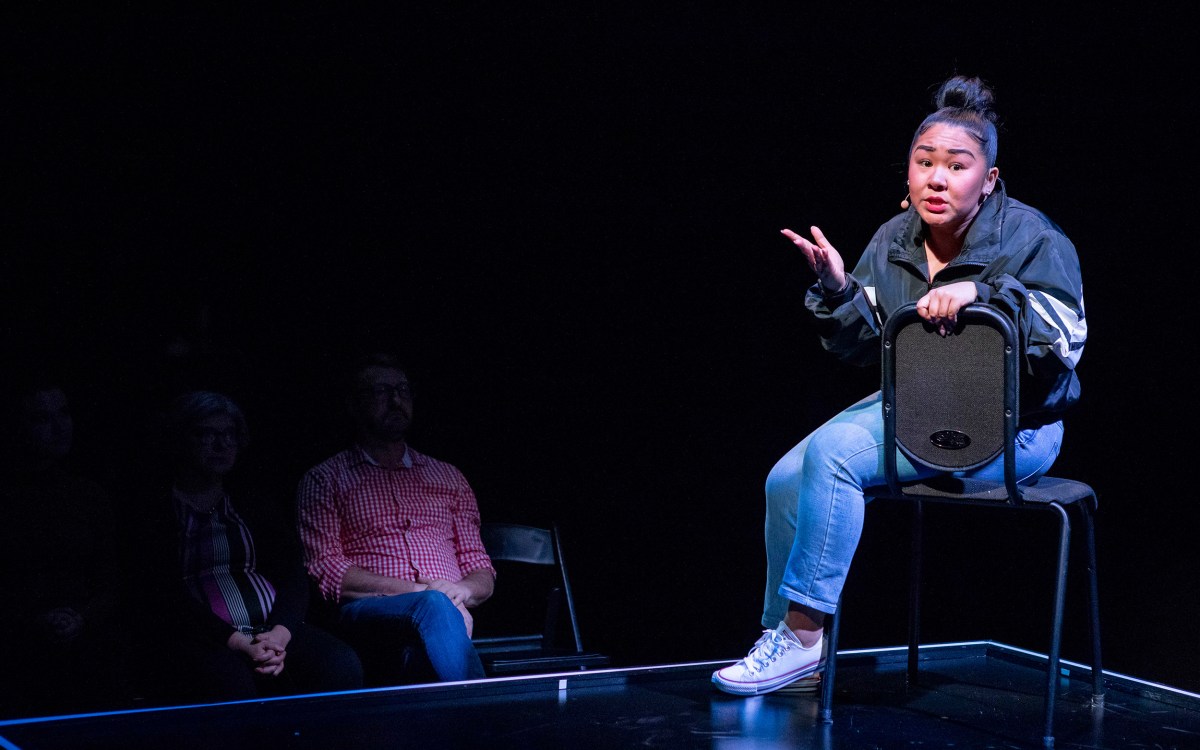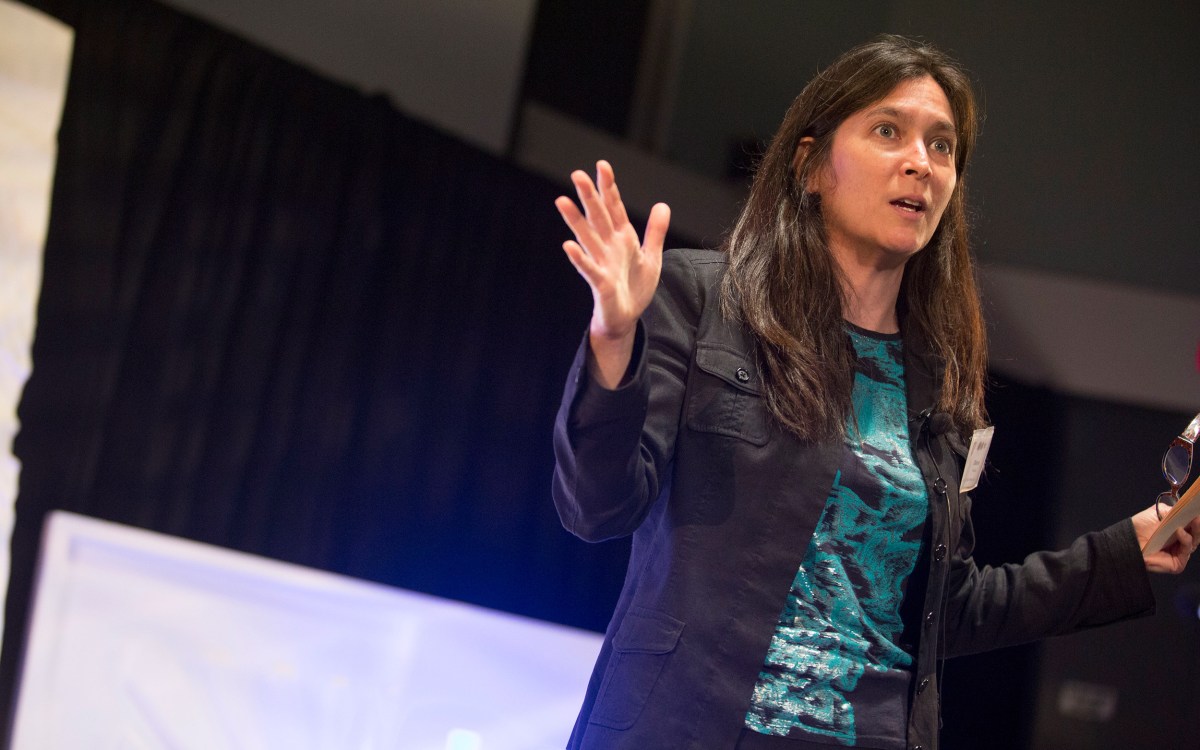
The A.R.T. brings “Jack and the Beanstalk: A Musical Adventure” to a screen near you through Jan. 4.
Photo by Johnathan Carr
A beloved holiday theater tradition, remote but not forgotten
A.R.T. show blends a little artistic creativity with tech magic
In a year that has upended the arts and so many beloved traditions, the A.R.T.’s annual holiday show is a joyful respite. “Jack and the Beanstalk: A Musical Adventure,” a 55-minute streamed event available through Jan. 4, showcases the talents of undergraduate cast members scattered around the country in a production that overcame pandemic restrictions with ingenuity — and a little help from friends.
In many ways, the collaborative creation reflects the themes that composer/playwright Julia Riew ’21 instilled in the book, music, and lyrics. “I wanted to write a show that was very, very uplifting and positive and happy. Not only because it’s a children’s show, but also because that’s the kind of show that people need right now,” said Riew, speaking from her family home in Connecticut.
https://youtu.be/C_TRJeyQFK0
To emphasize the show’s “four pillars of kindness, determination, courage, and creativity,” Riew explained, she departed from the original folk tale when necessary. Instead of having Jack sell the family cow for the magic beans, for example, she has him give away some milk to a thirsty old woman. It is in gratitude for this kindness that the old woman hands the young adventurer some magic beans.
The online format created both creative challenges and opportunities. For starters, Riew had to cut down the script, which she’d started in January, to better fit on-screen attention spans and rework staples of children’s theater, such as soliciting audience interaction before a character can progress. The format did give her some room to grow, however — at times, literally. The villain, King Giant, for example, “actually is a giant, because I could just make him larger” through video magic, said Riew. “And we can actually see a beanstalk growing out of the ground, because we got to work with animation.” To help replace some of the in-theater experience, the online show has its own downloadable “Jacktivity Pack” and original cast recording. (In addition, the family-friendly ticket is good for seven days, to allow for repeat viewing.)
[gz_photo_layout_two_asymmetric left=”317560″ right=”317559″ image_symmetric=”true” caption=”Caitlin%20Beirne%20as%20the%20Bean%20Peddler.%20Nikita%20Nair%20(left)%20as%20Jack%20and%20Olympia%20Hatzilambrou%20as%20Fiddler%20Cat.” credit=”Photos%20by%20Johnathan%20Carr” addl_classes=”compact-bottom” /]

Making the streamed production possible at all took its own magic. For starters, the team had to choose a platform. “As we were trying to figure out what form the show was going to take in this virtual world, one of the things we thought a lot about was the potential for internet problems with the actors being all far away from each other,” explained Emma Watt, the A.R.T. line producer, who oversaw the logistics. Besides sending cast members microphones, lights, and green screens, she described the various Zoom configurations the team had to manage. These ranged from a full-cast read-through of the script to the separate “rooms” that allowed director Rebecca Aparicio to work with actors while music director Ian Chan ’22 separately led rehearsals from his home in Toronto. (Chan and Riew created last year’s “Thumbelina.”) While the cast could act out their roles solo — playing against the portable green screens — producing a socially distanced musical had its own unique wrinkles. “The ability of people to sing together over Zoom is really tough because of the [delays],” said Watt.
“We taught every single person their individual ensemble line,” recalled Riew. Because of the lag time on Zoom, these lines were only blended in the studio. “We never actually heard anyone sing harmonies live together.”
For first-year Nikita Nair, who plays Jack, “This show was an amazing way to get back into the theater.”
“My entire room just essentially turned into a recording studio,” said the San Diego resident. She described the big umbrella lights on either side of her bed and the green screen that took up the back wall. “I had 2 feet of space to get all the acting and everything that we needed done.” To make it work, she drafted family members to help. Although her sisters Eshi and Ankita can’t be seen on screen, they filled in for socially distanced castmates — dropping the magic beans into Jack’s hand, for example. At other times, Nair would act toward a piece of tape that marked off a particular character’s height. “The cast was so amazing,” she said. “I don’t know how this group of people was able to come together, but I can’t imagine a more perfect group.
“Especially as a remote freshman, it was very easy to detach from the Harvard experience because as soon as I exited out of my hybrid class it was like I was out of College and back in my room, where I’ve been for the last 10 years,” said Nair, who is thinking of concentrating in astrophysics or cellular or molecular biology. “This really was a nice way to reenter into the overall College experience and interact with people.”






